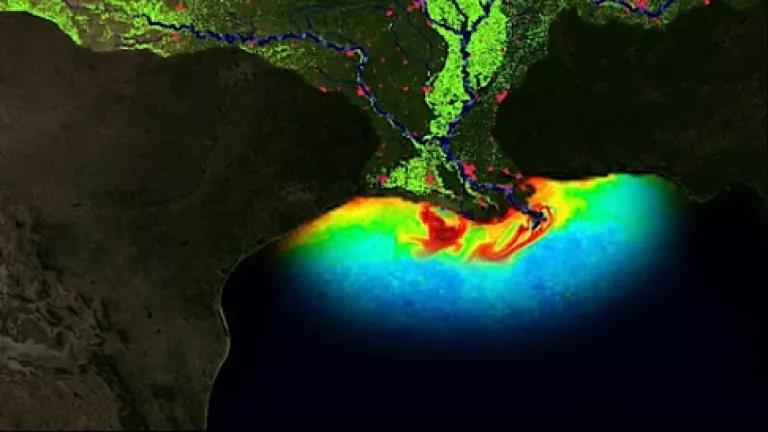New study: algae pollution makes coastal communities vulnerable to ocean acidification damage

In case we needed yet another reason to worry about the runaway algae choking our nation's waterways, we've now got one. A new study by scientists at NRDC collaborating with UC Davis, Ocean Conservancy, and Duke University shows that the pollution-fueled green slime - known to the scientists as "eutrophication" - multiplies the harm that climate change is wreaking on our oceans by making them more acidic. The resultant damage further risks the well-being of coastal communities whose industries depend on healthy oceans, potentially piling yet more economic pain onto the already multi-billion dollar cost of algae pollution.
We have known for awhile that rising atmospheric carbon dioxide is contributing to the problem of ocean acidification - a change in ocean chemistry that is can be threatening to creatures that use calcium carbonate to build their shells and skeletons, like coral, oysters, and clams. In simplest terms, when carbon dioxide dissolves in the ocean, it creates carbonic acid; more carbon dioxide in the air means more carbonic acid in the ocean; and more carbonic acid in the ocean means less of the building blocks the shell-building creatures need, threatening their survival and sometimes outright causing their shells to dissolve.
We have also known for awhile, as reiterated frequently in this space, that algae in our freshwater river systems and estuaries is a massive environmental problem. Nitrogen and phosphorus (a/k/a "nutrients") from sources like agriculture and sewage treatment are potent fertilizers fueling the growth of algae that sucks up the dissolved oxygen that other aquatic life needs to breathe, and creates "dead zones" where it sinks to the bottom and decomposes, the most notable being the Gulf of Mexico Dead Zone at the mouth of the Mississippi River.
The new study looks at what happens when these two crises come together, and it's not pretty. The study - a "vulnerability assessment" of the relative risk of economic harm to different coastal communities from acidification-related shellfish damage - builds on research establishing that growth of excess algae in the ocean has a double-whammy multiplier effect on acidification. Live and decomposing algae contributes yet more carbon dioxide to the ocean that triggers acidification; but more than that, eutrophication also reduces the ability of seawater to balance itself out and prevent further acidification. In other words, excess algae inflicts yet more damage, then keeps the ocean from defending against it.
Inevitably, then, the coastal communities whose local livelihood is grounded in the shellfish industry - looking at you, Connecticut and Louisiana and Maryland waterfront towns - are in much greater jeopardy of losing that livelihood when their waters are suffering the effects of our nation's green slime crisis. You can see a graphic representation of the problem at NRDC's web page concerning the study results. The interactive map lets you see where eutrophication is contributing to these coastal communities' economic risk.
And thus yet more innocent victims of the algae crisis may well end up footing the bill for it. As Des Moines Water Works recently reminded us in taking action against the agriculture industry, whose algae-fueling pollution has forced Des Moines to pay for costly treatment equipment, this really has got to stop. There is no reason in the world why fisherman, oyster farmers, and public water suppliers should have to pay for a problem that other industries are causing and sometimes profiting from. The way to start turning that situation around, as we have said repeatedly, is to put hard targets for nutrient pollution in place, that dischargers will have to find a way not to exceed. The study expressly noted the availability and importance of regulatory tools to address eutrophication, calling them a "no-regrets option" providing "multiple benefits."
The study's conclusions are dismaying, but our response need not be. We need to bear in mind that the study is not a prediction of certain doom for coastal communities but a "vulnerability" assessment, meaning a prediction about how hard these communities could be hit by the double barrels of climate change-fueled and eutrophication-fueled ocean acidification. Both are solvable problems, and we now have yet another reason to stop stalling and get moving on each of them.

